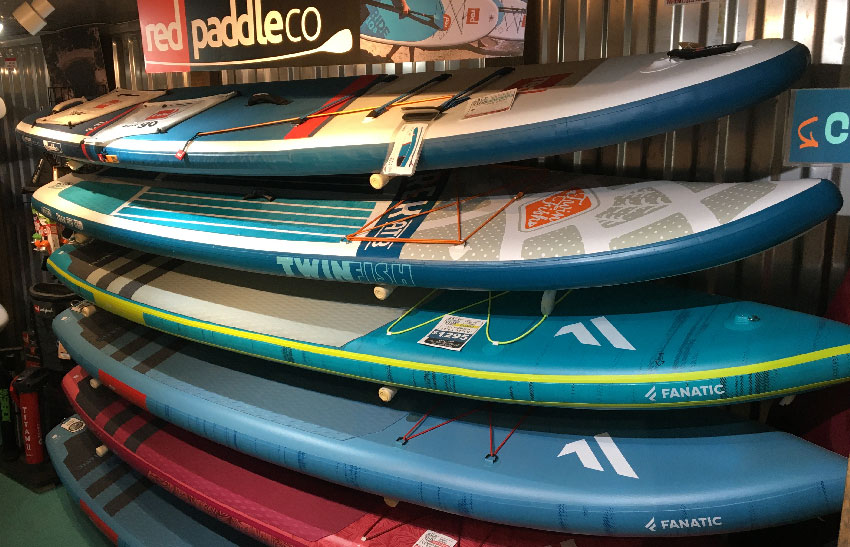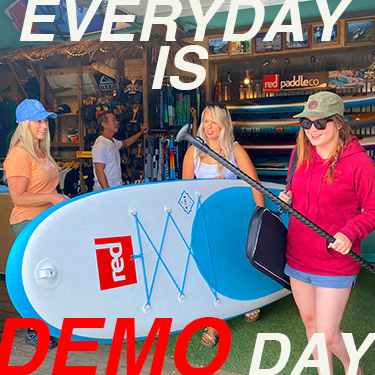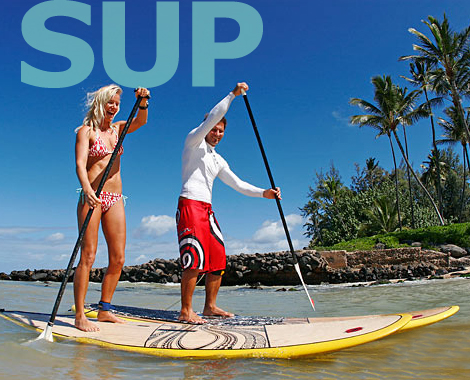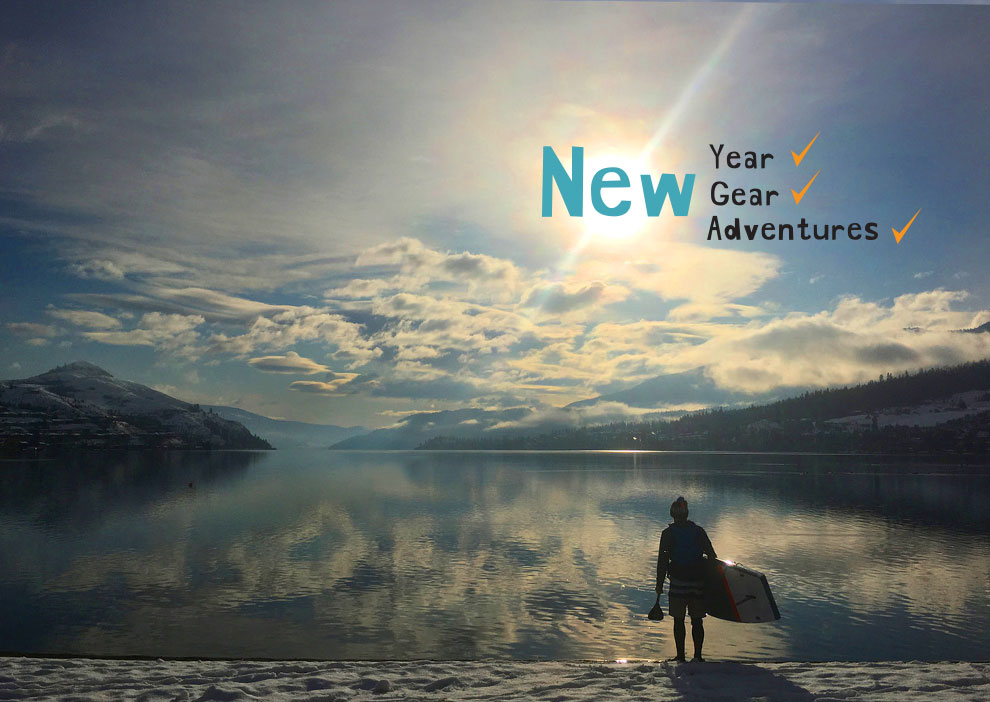How to Choose a Paddleboard
Welcome to the wide world of standup paddleboards! Here is our basic guide to help you understand which board is the right one for you (or your family, friend, relationship, etc). There is both art and science in choosing a board so this guide will serve to provide you with the basic information to point you in the right direction. To further narrow down your search, drop by the shop or call and our staff will be happy to help.
Experienced Crew (since 2009): Our shop was established in 2009 when the sport was still new in Canada – We are on the water through all seasons and bring years of experience to the conversation. We only work with SUP and Surf brands who are dedicated to growing our current and future water lovers. Our mission has always been to build strong community of water lovers to promote the sport so that it grows deep roots in the region (and across the country). Okay, let’s get going…
There are two types of general shapes (and then a variety of sub-categories within);
Planing Hull – Often referred to as an ‘All-Rounder’ type of board, it’s basic shape looks like an oversize surf longboard, but there’s more to it’s design than meets the eye.
By Activity: Recreational cruising, surfing, river running, fishing, yoga
Displacement Hull – They have a thicker nose and rails that allow them to maintain their speed in all types of water conditions more efficiently. If you want more ‘performance’ (speed and glide), a board from this category might be the best choice.
By Activity: Fast flatwater cruising, fitness, racing, touring, rivers (flat), fishing.
WHICH LENGTH IS RIGHT? BY ACTIVITY:
Recreational Cruising |
All Rounder 10′-12′ |
Touring
|
|
Touring |
Recreational
|
Longer Distance
|
|
Racing / Performance |
12’6″-14′ |
|
|
Surfing |
Beginner
|
Intermediate
|
Advanced 6′-9′ |
River (Rapids & Whitewater) |
Composite 8′-10’6″ |
Inflatable
|
|
Traveling – Limited Space / Tight spaces
|
Inflatable
|
VOLUME GUIDE: HOW WIDTH, LENGTH & THICKNESS WORK
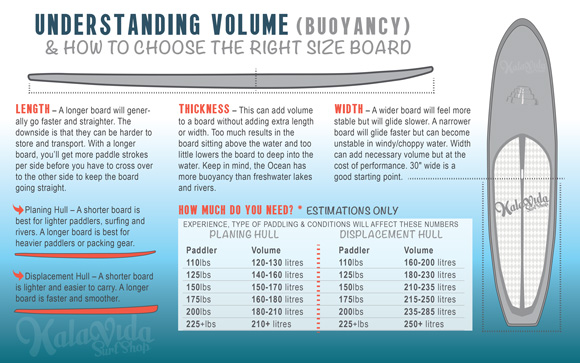
CONSTRUCTIONS:
At the core of each board is a thick piece of foam and there are many types including EPS (expanded polystyrene ), Polystyrene and Polyurethane. What is most important is how the board is built around the foam (resins, fiberglass, carbon, etc) and there are many types of construction (sandwich, molded, hand-finished, and more). To get a better idea of what’s inside each board, check out the brand’s website.
INFLATABLE BOARDS:
Advancements in technology have made inflatable boards much stiffer, stronger and lighter. That’s great news for anyone who wants to travel with a board, who doesn’t want to transport it on the roof of their vehicle and for those with limited storage space. They can range in size from 8′ to 14′ for recreational paddling, touring and even racing.
Sizing basics:
– 4″ Thick Boards – Better for lighter paddlers, surfing, and some river paddling. The thinner rail will surf better but a heavier person will flex the board too much.
– 4.5″-6″ Thick Boards – Better for medium to heavier paddlers or anyone who wants the extra volume. They allow paddlers to carry gear, kids and float higher in the water. Downside: They won’t surf as well as the 4″ thick board and will weight an extra pound or two.
BRANDS – WHY THEY ARE IMPORTANT:
There is no doubt we live in a society that is dominated by ‘brand’ named merchandise. The basic concept is to provide you with the confidence that you can trust a specific brand for a range of values (quality, flair, cutting-edge design, etc). What does that mean for us as a consumer? That typically means you can find better dealer support, better warranty support and ongoing product development.
Is an expensive board actually better value? The word ‘value’ is different for each of us as consumers. Starboard and Fanatic, for example, have a long history of building all types of boards so they can be counted on for consistent quality and warranty support – This is important when you are looking for long-term value.
For inflatables, Red Paddle (now with a 5 year warranty) has focused their efforts on building better inflatables while some of the newer brands that focus solely on SUP boards (Starboard, Twin Fish) are investing in the growth of the sport by supporting events (kids programs, events). This helps develop the necessary roots for the sport so that you’re board will have a strong ‘resale’ value in 2, 5, and even 10 years.
Direct-to-Consumer Brands: There are plenty of ‘knock-offs’ now on the market so be wary of the direct-to-consumer brands. We have seen many of them pop up, only to disappear in short time – That leaves you without product support and warranty.
This trend happened when Snowboarding exploded into the mainstream – today only a handful of those brands remain and they are the ones who invested back into the sport and supported their dealers and customers.
